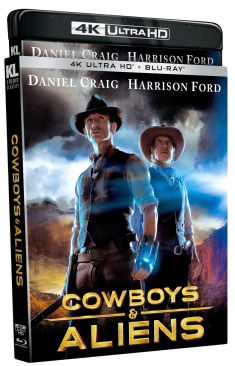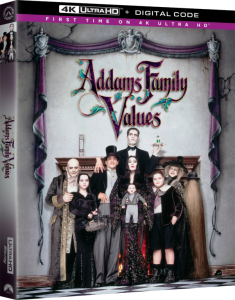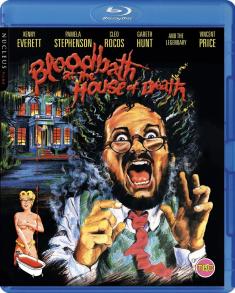Hands-On First Look: Sony XBR-85Z9G 85-Inch 8K HDR Master Series TV
Overview -Overview -- Featuring an 8K LCD panel with full array local dimming, support for HDR10/Dolby Vision, wide color gamut capabilities, and close to 4,000 nits of peak brightness, the Sony 85-inch Z9G boasts some of the most impressive specs on the market. But while the TV is simply stunning in person, it remains debatable whether all those extra pixels are really worth the current extra cost. Still, for users who have the cash to spare and who want the absolute best HDR display tech available, this might be the new 8K TV to beat.
Intro
High-Def Digest was recently invited to cover the 2019 Value Electronics TV Shootout at CE Week in NYC. And while the Shootout itself (fully detailed HERE) only included 4K HDR TV models, Sony was still kind enough to bring along its new flagship 85-inch 8K Z9G Master Series TV to the show.
Positioned on the other side of the room and demoed out of competition, the extra-large screen shone brightly during the event, stealing the spotlight away from its 4K siblings during various breaks in the Shootout. And while Sony's own 65-inch A9G 4K OLED TV may have officially won the coveted "King of TV" title, it was the company's 8K set that ended up leaving the most lasting impression.
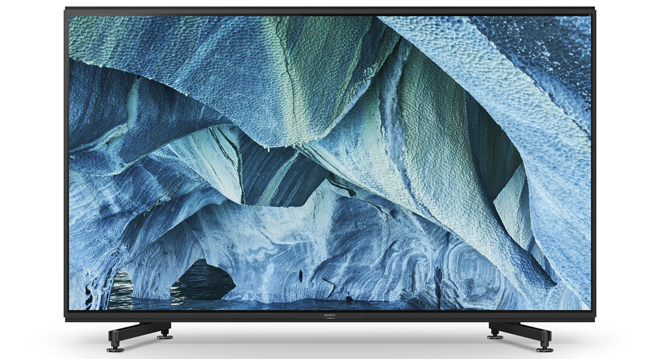
Serving as Sony's first entry into the consumer 8K HDR display market, the Z9G Master Series TV is now poised to compete with Samsung's Q900 8K QLED TV lineup and LG's upcoming SM99 8K NanoCell LCD and Z9 8K OLED TVs. And though all of the new 8K models have their own unique strengths and weaknesses, Sony's offering may just have them all beat when it comes to calibrated HDR brightness.
Specs & Design
The Z9G 8K Master Series TV is available in 85-inch ($12,999) and 98-inch ($69,999) screen sizes. The display features an 8K LCD panel with a resolution of 7680 x 4320. Likewise, the TV offers support for Dolby Vision, HDR10, and HLG high dynamic range formats with Sony's 8K X-tended Dynamic Range PRO tech and wide color gamut capabilities. Though the company does not reveal exact brightness specs, reports indicate that the panel is capable of achieving close to 4,000 nits in Cinema mode -- making it one of the brightest consumer displays on the market for HDR content. In addition, the set also uses Sony's Backlight Master Drive tech with full-array local dimming. And while the company does not give an official zone count, the TV reportedly features a whopping 720 zones.
Under the hood, the display is powered by Sony's Picture Processor X1 Ultimate and 8K X-Reality PRO, allowing the TV to upscale any content to near-8K quality. Meanwhile, Android TV integration is also included for access to streaming apps, along with Chromecast built-in and support for voice control via the included remote or a separate Google Home or Amazon Alexa device. In addition, the unit houses an Acoustic Multi-Audio system with four front-facing speakers.
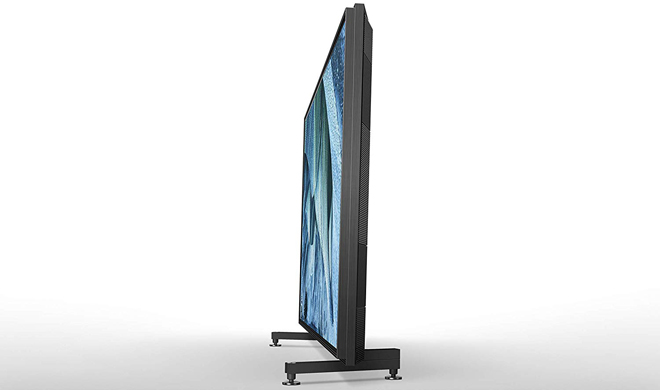
Without the stand, the TV measures 75 3/8 x 45 x 4 3/4 inches, and with the stand attached it measures 75 3/8 x 48 3/8 x 17 1/8 inches. Eschewing the thin and sleek aesthetic that many premium 4K displays are known for, the Z9G features a rather bulky design. In fact, I was actually a bit taken aback by its thick profile and beefy appearance in person. Don't get me wrong, it's still an attractive looking display, but the styling definitely veers more toward a decidedly rugged look rather than the skinny, nearly bezel-less appearance of other contemporary flat panels -- likely due to the hefty tech the unit has to house. On a similar note, this thing also puts out some definite heat while in use, evoking the warm aura of an old plasma panel more than a typical LCD.
Finally, four HDMI inputs are integrated, but only one of the ports is compliant with the most recent HDMI 2.1 spec for 8K 60 fps support. And while it would be nice to have more HDMI 2.1 connections for future proofing purposes, the almost complete lack of 8K content and source components makes this a pretty forgivable omission.
Performance
For demo purposes, Sony had a reel of actual uncompressed 8K HDR content being played on the screen. Yes, you read that correctly -- genuine 8K video on an 8K panel! And to put it simply, the results were stunning.
The clips were all being played directly from DaVinci Resolve video editing software running on a computer hooked up to the display. The eclectic collection of footage included scenes of cars racing down a highway, surfers at a beach, a Rio Carnival celebration, various jungle animals, and more -- offering an absolutely gorgeous assortment of HDR imagery.
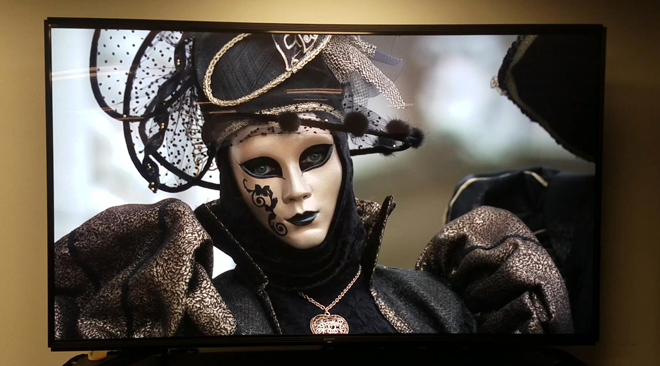
Colors popped from the screen with realistic depth and nuance. Bold red and yellow supercars carried rich saturation without bleeding or looking unnatural while glowing headlights and traffic lights at night radiated from the screen with intense yet precise brightness -- allowing HDR highlights to shine without any visible blooming or dimming issues. With that said, the demo was conducted with a fair amount of ambient light on in the room, so it remains to be seen just how well the TV's local dimming and black levels operate under dark home theater conditions.
Still, the set's industry-leading brightness managed to produce incredible HDR imagery even with the lights on, creating a jaw-dropping sense of dimension. Detail was also especially striking. And though I wish there had been a side-by-side comparison with the same content in 4K on a 4K panel, the level of clarity the TV offered at normal and closer viewing distances was remarkable.
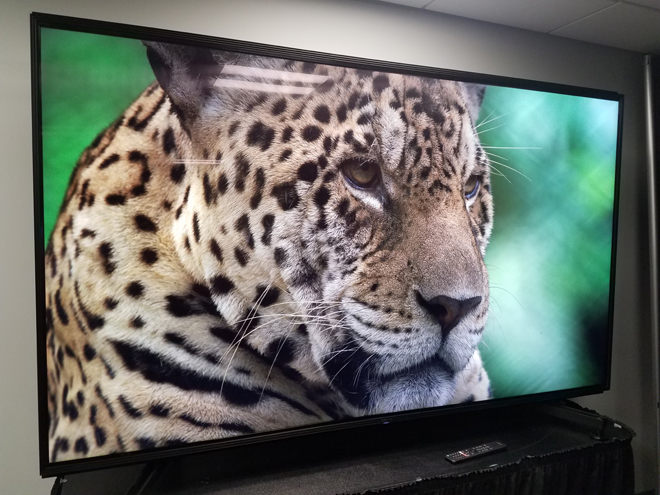
Most of my viewing was done from about five to six feet away from the screen, but I also got in up close and personal to really see just how well all those pixels held up. At a reasonable distance, the 8K content was packed with appreciable fine texture and depth, making every tiny hair on various animals like monkeys and leopards in the demo material perfectly visible. And that level of precise clarity showed no real signs of breaking apart when sticking my face just inches from the panel. Sure, some extremely light noise became more visible at closer distances, but overall sharpness was as good or better than anything I've seen before.
Perhaps no footage offered a better overall demonstration of the panel's strengths, than the 8K HDR videos taken at a Rio Carnival celebration. Absolutely brimming with intricate, tiny details and tightly packed patterns, the demo reel was rendered with impeccable precision on the TV, resulting in a lifelike view of the action. Wide shots of the crowded parade enabled each elaborately dressed participant, individual colorful feather, and various small, glittery object to appear without compromise, revealing a sometimes subtle but still appreciable extra level of resolution that a 4K panel with 4K content simply could not provide -- whether several feet or several inches from the screen. And again, the set's incredible HDR brightness capabilities enabled stunning specular highlights without blowing out detail.
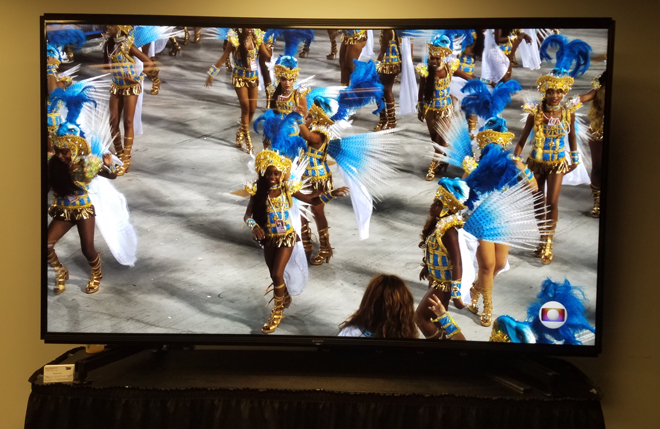
Viewing angles were also surprisingly strong, allowing the panel to retain color and contrast fairly well from a side view. There was still some loss in quality, though, and I suspect further issues across the board would likely be revealed in a more critical, darker environment. As it stands, however, based on the demo provided, the Z9G's 8K HDR performance was in a class of its own, highlighting the full potential of what an 8K TV can offer at extra-large screen sizes like this.
Final Thoughts
It might be expensive and a bit bulky, but even in a room full of the year's very best 4K displays, the Sony Z9G 8K TV absolutely stole the spotlight.
But ignoring the TV's impressive brightness performance and zone count (which could also be implemented on a more affordable 4K panel), are the display's extra pixels really worth such a premium? After all, outside of specialized demo reels running on powerful computers, 8K HDR content is essentially non-existent -- so, what's the point?
Well, unlike the transition from HD to Ultra HD, Sony doesn't really see 8K becoming a true replacement for 4K video. Instead, the tech is being pushed more as a premium upscaling solution to make 4K content look better on extra-large screens which might otherwise reveal imperfections. Particularly, Sony feels that its 8K TV is the best way to experience 4K video on 85-inch panels and above.
With that in mind, the extra resolution and 4K to 8K upscaling benefits of a set like this will primarily only be a draw to customers who want to replicate a projector-like experience by watching an extra-large TV from a relatively close viewing distance. And while that does sound kind of awesome, the $12,999 cost of admission is considerable.
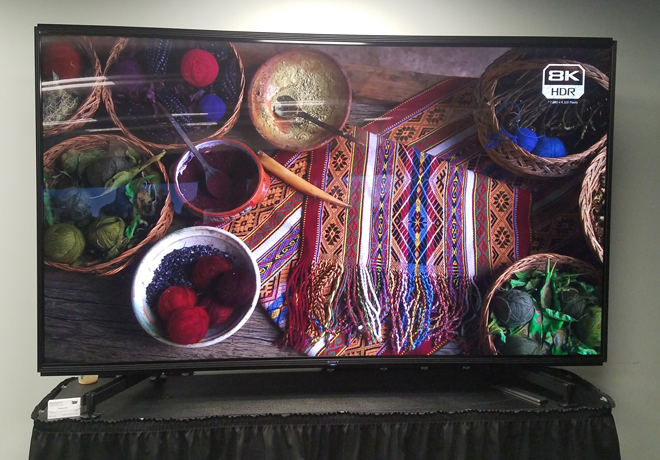
Though part of me wishes that Sony was also offering a 65-inch 4K version of this TV with the same 4,000 nit output and local dimming tech for less money, there's no denying the stunning picture found on this 85-inch 8K flagship display. For customers who want the very best HDR performance that money can buy, this just might be the new consumer display to beat.








